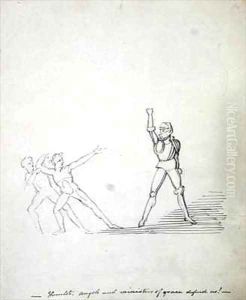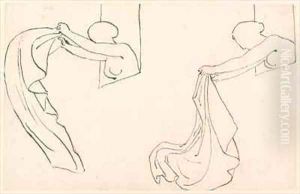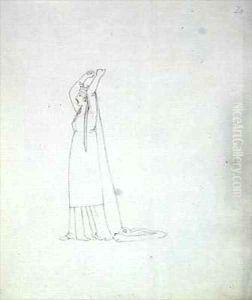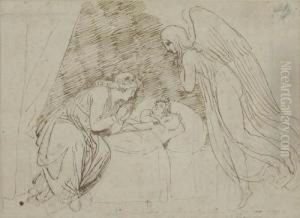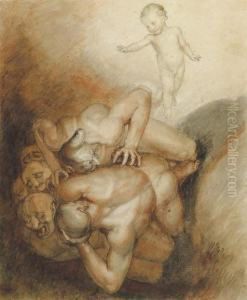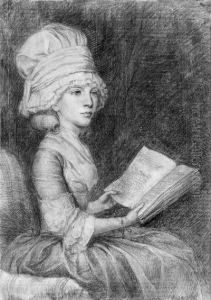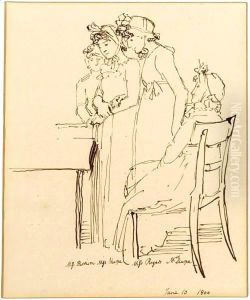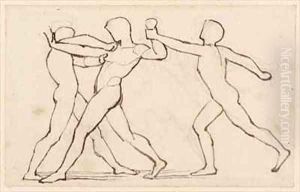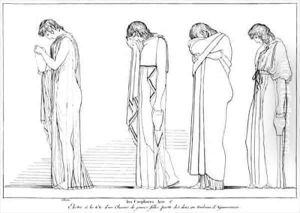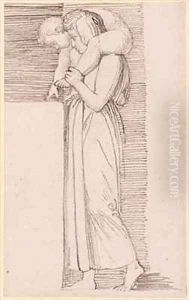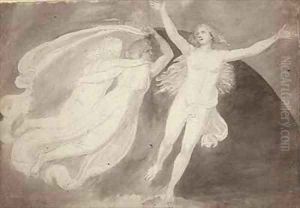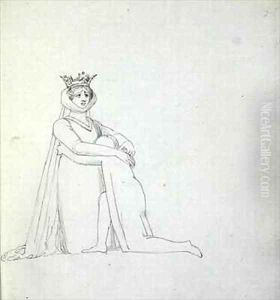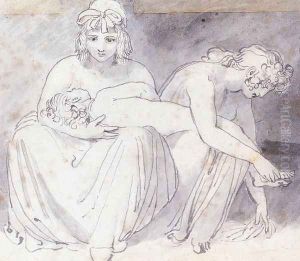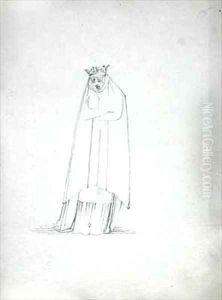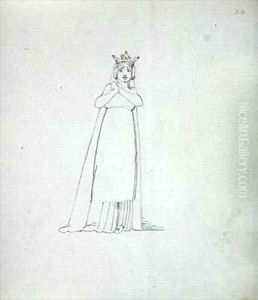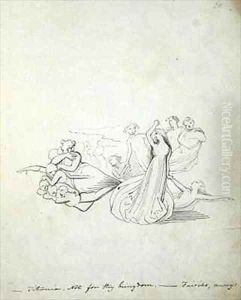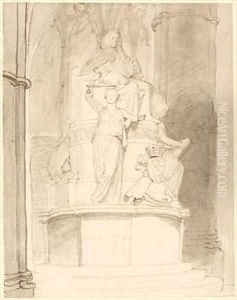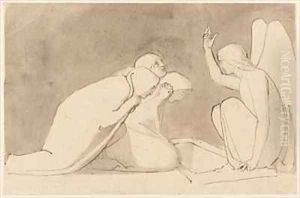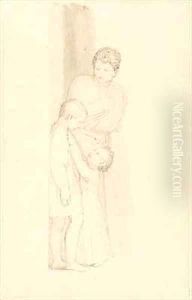John Flaxman Paintings
John Flaxman was an English sculptor and draughtsman, renowned for his work in sculpture and his designs for Wedgwood. Born on July 6, 1755, in York, Flaxman was the son of a mold maker for plaster figure makers, which influenced his early interest in sculpture. He began his formal art education at the Royal Academy Schools at the age of fifteen. Flaxman's talent was recognized early on, and he won several medals from the Royal Academy.
Flaxman's work is characterized by its neoclassical style, which was heavily influenced by Greek and Roman art. He often drew inspiration from ancient mythology and literature, which is evidenced in his designs for Wedgwood's jasperware and his illustrations for editions of Homer's 'Iliad' and 'Odyssey'. His style was defined by its elegance, simplicity, and purity of line, which stood in contrast to the more elaborate styles of the time.
In 1787, Flaxman moved to Rome with his wife, Anne Denman, which proved to be a pivotal period in his career. During his seven years in Italy, he associated with other neoclassical artists and continued to develop his unique style. He also received numerous commissions from British patrons, which helped him to establish his reputation as a leading sculptor.
Upon his return to England in 1794, Flaxman opened a studio in London and became a sought-after artist for monuments and memorials. He was appointed the Royal Academy's first Professor of Sculpture in 1810 and was later elected as a member of the prestigious Royal Society. Flaxman's notable works include the monument to Admiral Lord Nelson in St Paul's Cathedral and the 'Shield of Achilles', based on Homer's description in the 'Iliad'.
John Flaxman passed away on December 7, 1826, in London. His legacy endures in his influence on British sculpture and the continued admiration for his designs and illustrations. His works are held in collections around the world, and his contributions to the field of sculpture are celebrated for their timeless quality and their role in the progression of neoclassical art.











